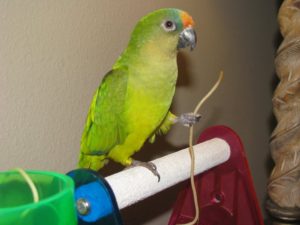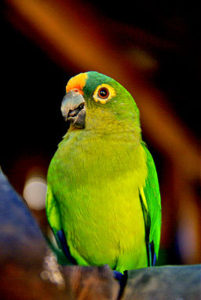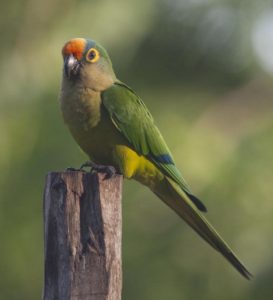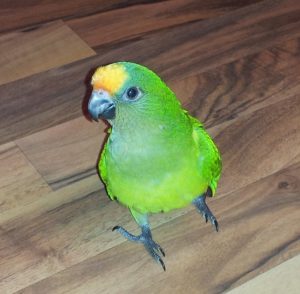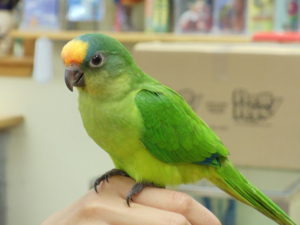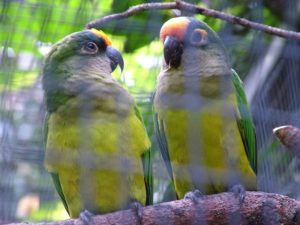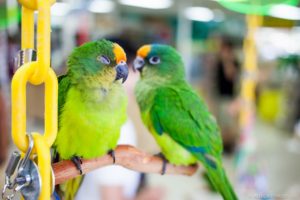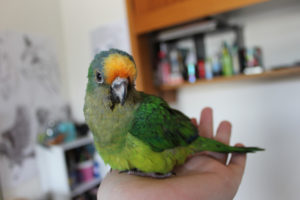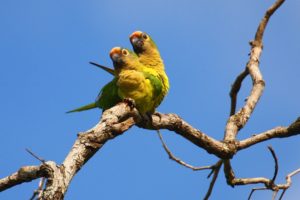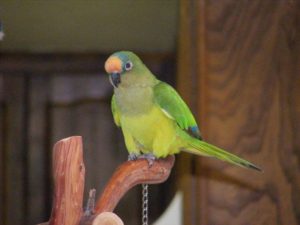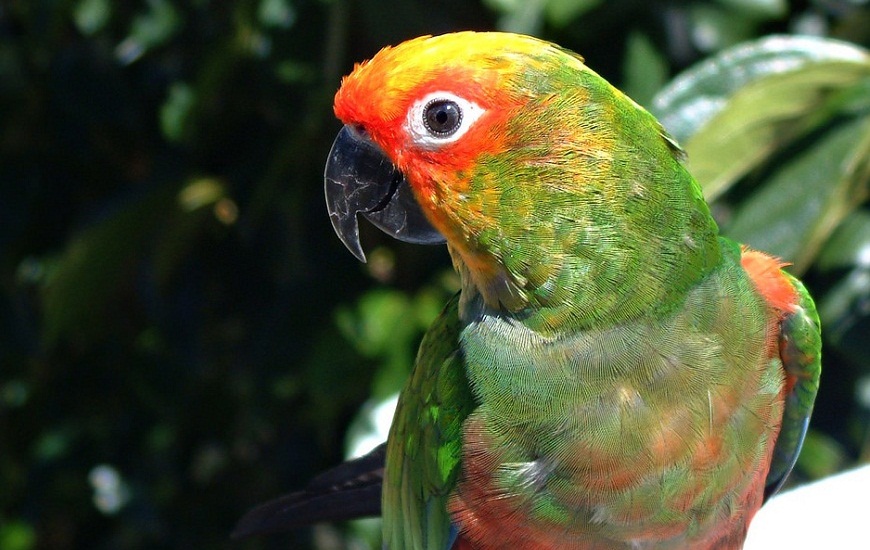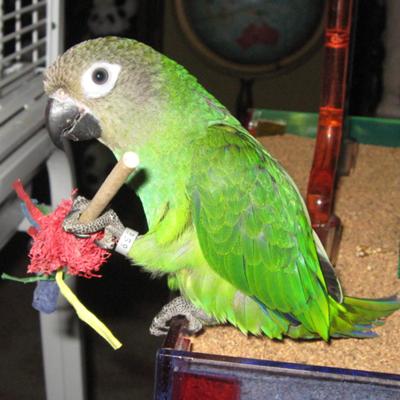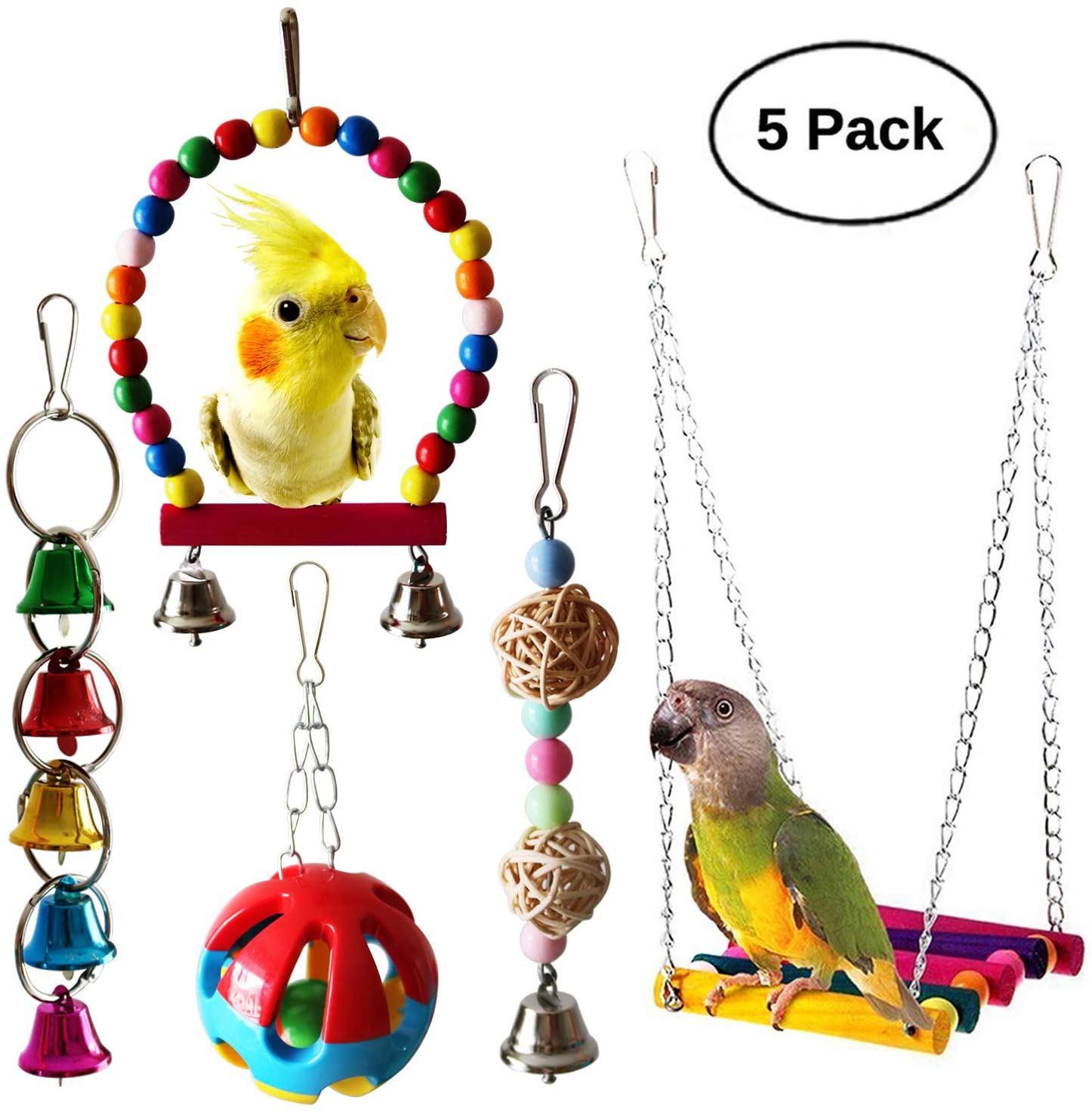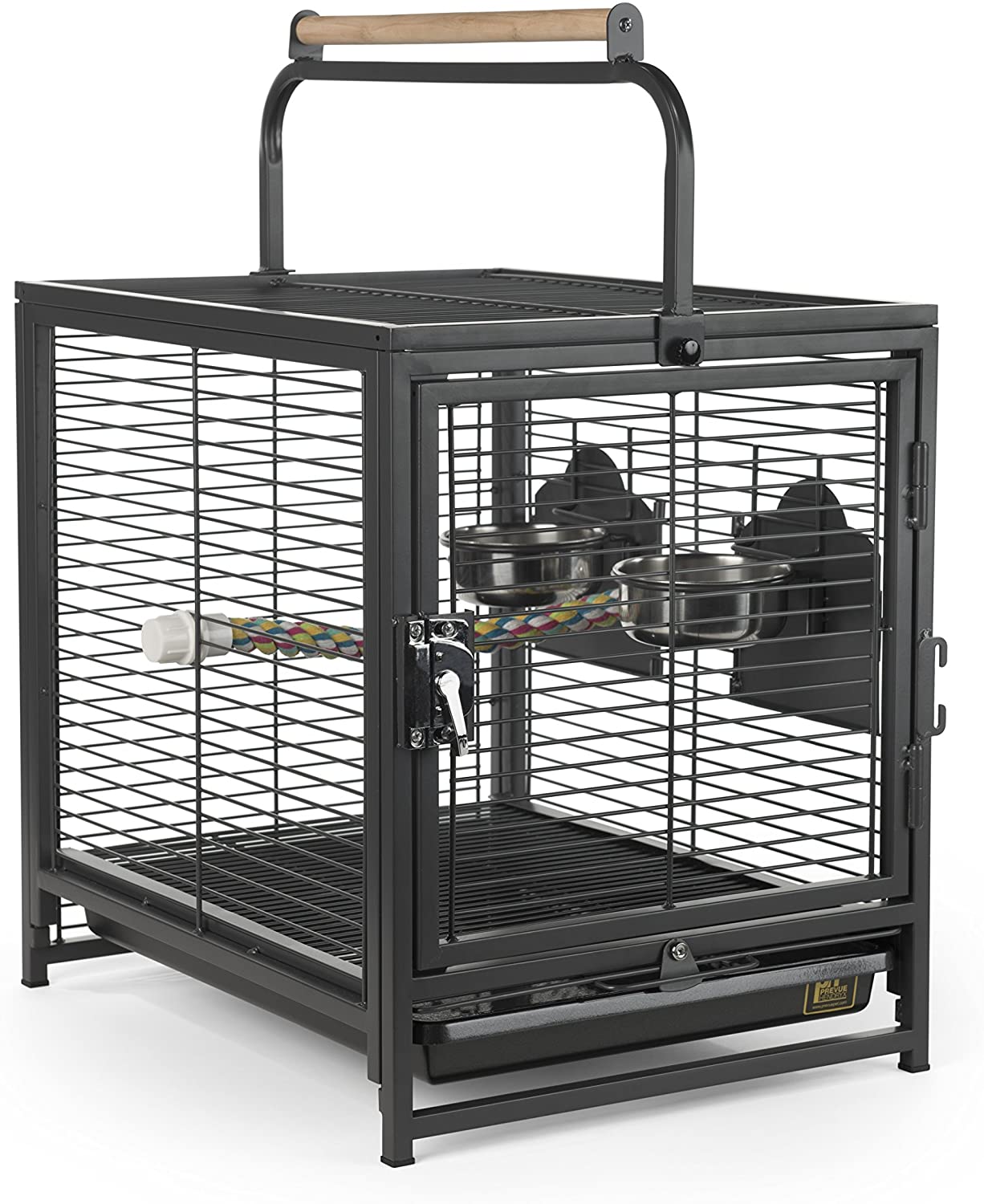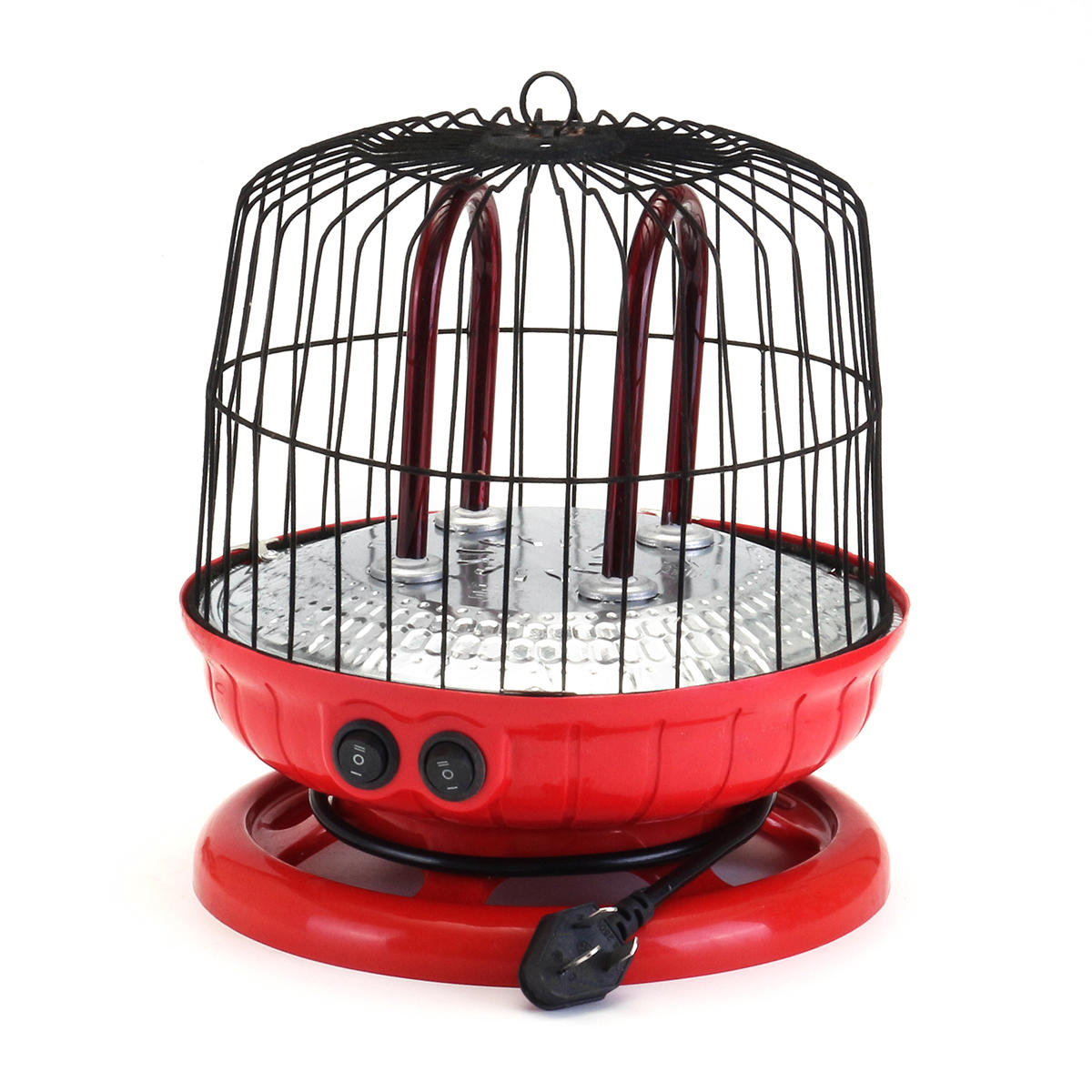Peach-fronted conures are one of the most jovial and charming species of the entire conure family. As the name suggests, these monomorphic birds exhibit a peach colored patch on their forehead.
Scientific Classification |
|
| Kingdom | Animalia |
| Phylum | Chordata |
| Class | Aves |
| Order | Psittaciformes |
| Superfamily | Psittacoidea |
| Family | Psittacidae |
| Subfamily | Arinae |
| Tribe | Arini |
| Genus | Eupsittula |
| Scientific Name | Eupsittula aurea |
Quick Information |
|
| Other names | Golden-crowned conure, peach-fronted parakeet, peachfront |
| Size | Around 10 inches(25 cm) |
| Wingspan | Around 7 inches (18 cm) |
| Weight | 80-110 grams |
| Color | Adults: Grayish green back, olive green breast, peach cap (hence the name), blue-green crown, blue tinges on tail, black tips on wings, yellow eye ring, gray beak
Juveniles: Same coloration as adults without the yellow eye ring |
| Distribution | Paraguay, Bolivia, Brazil (São Paulo, Mato Grosso), Northern Argentina, Sipaliwini district of Suriname |
| Subspecies |
|
| Habitat | Lowland, hot and humid areas |
| Sounds and calls | Screeching |
| Breeding age | 12 months |
| Breeding season | May to September |
| Clutch size | 2-4 eggs |
| Incubation period | Around 26 days |
| Fledging | 52 days |
| Lifespan | 20-30 years |
| Diet | Fruits, seeds and vegetables |
| IUCN Conservation Status | Least Concern |
As Pets
Their social and agreeable characteristics make them a good choice for pet lovers. As a perfect companion bird, peach-fronted conures are easy to train and they will never let you get bored at any point of time.
Housing
Install a powder coated metal cage sizing 24X18X24 inches with a few manzanita perches for these strong chewers. The ideal size for their nest box is 13x10x10 inches with a hole of 3.25 inches. You may also place a playpen outside the cage as your pet needs to have some “free time” out of the cage.
Temperature
Keep them in a clean area within a range of 65°F-80°F away from drafts.
Temperament
These gentle birds are known for their love for human proximity. They also enjoy chewing strong and hardy materials for a long time. Due to their inquisitive mind and intelligence, they often learn various tricks in no time and surprise others. Once they make a bond with you, they are likely to accompany you while you watch TV or listen to songs. Adults are prone to feather plucking if they don’t get sufficient attention and mental stimulation. So, you must provide some chewable toys to keep them occupied while you are not around.
For making a perfect bond, you must keep a single bird as two birds often bond well each other and may disregard the owner.
Feeding
Fresh vegetables, fruits, sprouted seeds and pellet mix are good options for them. Cuttlebone or mineral blocks are good for conures too as they prevent bone deficiency.
Care
Clipping of feathers and nail is required by a professional pet as they are good flyers and can escape easily. Peach-fronted conures love to take shower, so either spray them with a spray bottle or place a shallow bowl of water.
A proper cleaning of the cage, cage trays, food and water bowls with a bird-friendly disinfectant is necessary.
Health problems
Common illnesses include psittacine beak and feather disease (PBFD), aspergillosis, polyoma, erythremic myelosis, chronic depression, Pacheco’s disease. A healthy diet, hygienic atmosphere and frequent check ups by a vet keep such diseases at bay.
Price
They are available in a range of $299-$229.
Interesting fact
- Peach-fronted conures bear striking similarities with the subspecies of orange-fronted conures.
Video: Peach-fronted conure talking
Reference
- https://www.petguide.com/breeds/bird/peach-fronted-conure/
- http://www.parrotsdailynews.com/breeding-of-the-peach-fronted-conure-part-ii/
- https://www.petguide.com/breeds/bird/peach-fronted-conure/
- https://beautyofbirds.com/peach-fronted-conures/
- https://www.parrots.org/encyclopedia/peach-fronted-conure
- https://birdsoftheworld.org/bow/species/pefpar1/cur/introduction


